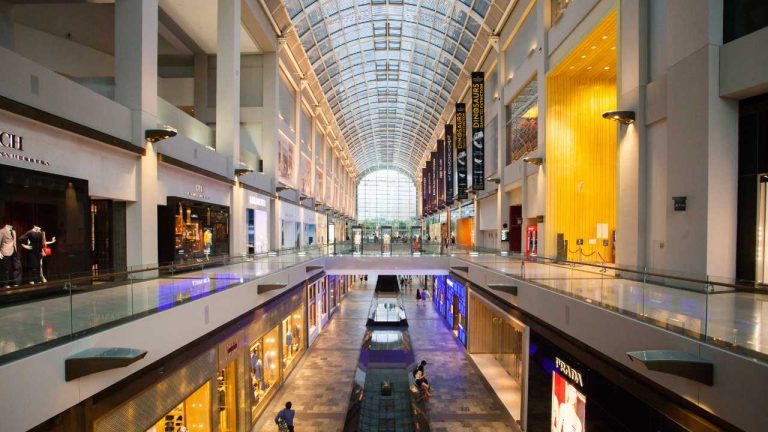Stretch Your Marketing Budget in Shopping Center Management
It is a fact that a good marketing budget in a retail shopping center will help generate more customer visits to a retail property and potential sales for the tenants. It directly follows that a busy and successful tenant mix will underpin the market rental for the property and reduce the vacancy factor. The whole equation works well and needs to be incorporated into a property performance plan.
The annual performance plan for the property should include a strategy and process to support marketing. It is the job of the shopping centre manager to ensure that a successful budget is established for the comprehensive marketing of the property.
Why is your retail property different or better than the others in the area? When you know the answers to that, you have the basis or foundations of property promotion.
Tenant’s contributions
The tenants should contribute towards the marketing fund through specific clauses and requirements detailed in the lease document. Typically the marketing fund contribution would be structured at around five per cent of the monthly rental paid by each tenant on an individual basis. The funds collected in the process should be separated in the accounting process from any income or expenditure monies controlled by the landlord.
In some situations and with the newer retail property developments, it is common for the landlord to contribute towards the marketing process for some time, and whilst the property gets established and builds retail market share.
Reporting requirements
There are requirements of reporting associated with collecting and using shopping centre marketing funds. Some of those requirements are supported by legislation and law so take the time to understand how that works in your location and with the property type.
An auditing process will also normally occur to ensure that the money is charged and spent correctly. Marketing monies are not controlled or owned by the landlord; the landlord is just the facilitator to help the process occur. The promotional monies belong to the tenants within the property and are spent as part of the annual marketing budget. The auditing process ensures that correct financial record keeping controls apply.
Stretching the budget
So the marketing budget should be stretched across a number of different strategies; in that way the shopping centre can be comprehensively promoted to the customers locally, and over time that can help build sales and customer visits.
Whilst you may have limited funds to spend as part of the retail property promotion, it is really important that the appropriate media choices and promotional activities occur. Here are some ideas to help you:
- Seasonal sales and holidays – Understand the area in which the property is located with particular attention focused on seasonal sales, community holidays, visiting tourists, and climatic conditions. All of those things will have impact on retail spending patterns and shopping needs. The budget can be built around those particular factors for your local area.
- Website – The online profile for the shopping centre should be heavily branded in a consistent and meaningful way. Every shopping centre should have a name, an identity, and a recognisable logo. Those three things should be consistently promoted across all marketing and media choices. The branding will also reflect the positioning of the property as a either a neighbourhood centre, a local shopping centre, or a regional shopping centre.
- E-mail marketing processes – The promotion of the property should include a regular newsletter and an auto-responder process to send out those emails. The growth of the database can be driven by the shopping centre website, as well as local competitions, and the cooperation of your tenant mix.
- Letterbox drops – Flyers and brochures should be dropped into the local letter box system on a regular basis. The promotional message should be sent at least once each quarter and should be crafted given the shopping season, and the customer profiles for the property. As part of the flyer design, make sure that you include both the e-mail and website profiles to encourage interaction and feedback. You can also promote any competition online as part of the letterbox drop.
- Bag fillers – This is a useful strategy when it comes to spreading the news or the interaction between tenants and customers. Specific bag fillers can be inserted in the shopping bag as a result of a retail purchase. Shopping centre competitions can also be promoted quite effectively in this way.
- Community groups – Allow part of the common or mall area within the shopping centre to be used by local community groups. At the times of the seasonal sales, or on busy days and evenings during the week you can have local community groups using specially designed booths to promote their activities and profile. When correctly undertaken, this process will encourage more people to use your retail center and shop.
- Billboards – Local billboards on main highways and transport corridors will help spread the identity, the location, and existence of your shopping centre to the local and the transient community. Choose the location of the billboard based on available funds, and the targeted customer base.
- TV and Radio – Devote some of your promotional activities on local TV and Radio but time that activity around competitions and shopping center events.
- Property upgrades and renovations – If you are going to renovate a retail property, use the renovation as a reason to lift your marketing efforts. Get plenty of billboards and banners around the property to reflect the renovation process and spread the word to the shopping community. At the end of the renovation you can have a ‘grand reopening sale’.
Given all of these things you can and should track the effectiveness of the marketing of the shopping center by regular customer surveys and tenant sales. Soon you will see what is working when it comes to property promotion.





